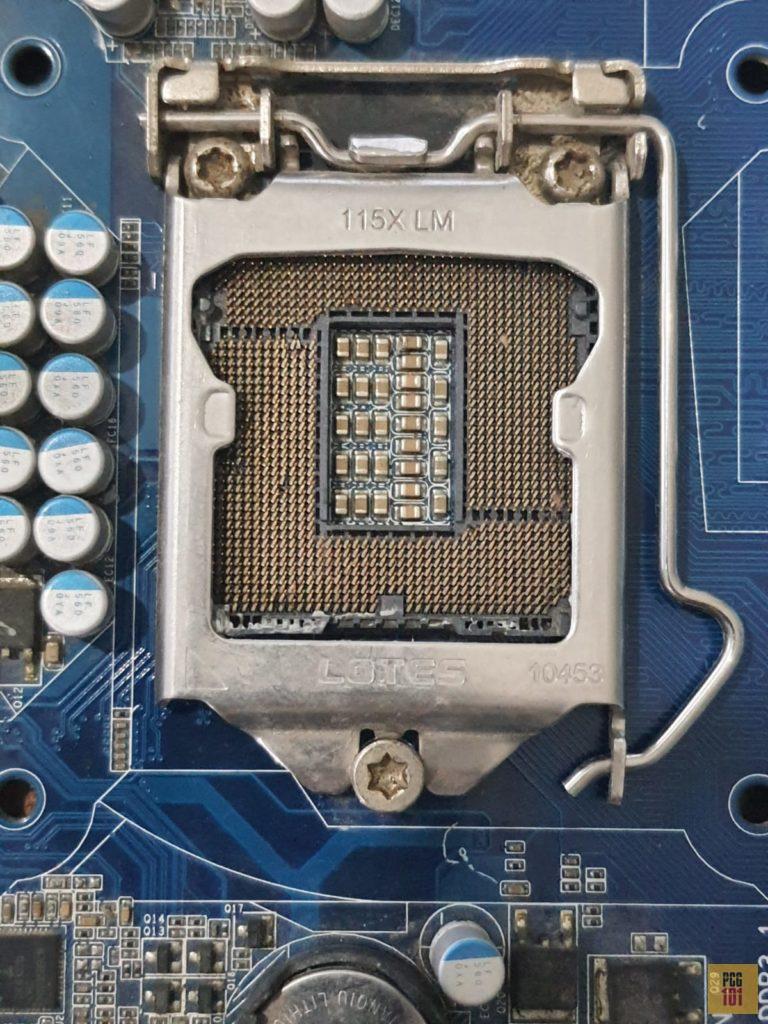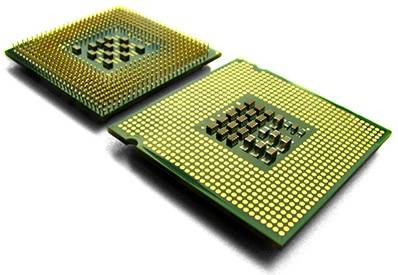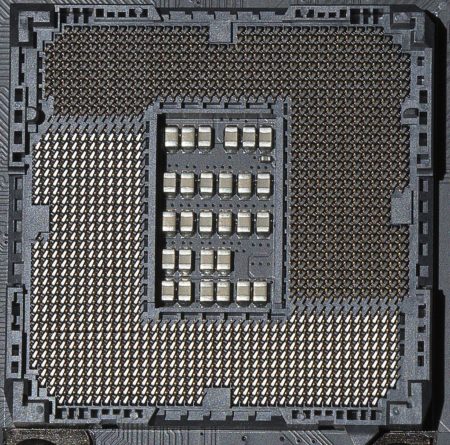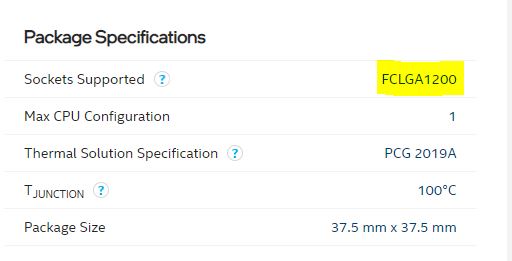The short and simple answer to this query is yes, you can upgrade the CPU on your PC without changing your motherboard.
However, the CPU you want to upgrade must also be compatible with your motherboard.
To determine the compatibility of the CPU with the motherboard, you have to check the socket details on your motherboard and the CPU.
In the following text, we will look in-depth into whether you can upgrade the CPU without changing the motherboard and the precautions to take note of.
TABLE OF CONTENTS
What is the Motherboard’s CPU Socket?

A CPU socket, or a CPU slot, is the main placeholder for the CPU located on the motherboard.
It has the necessary pins, dimensions, and harness to hold the CPU onto the motherboard.
The socket itself is very easy to spot on any given motherboard.
Socket Surface Mounting Technology
Generally, two-socket surface mounting technologies are found on desktop PCs: LGA and PGA.

LGA stands for Land Grid Array. With this technique, the socket on the motherboard has visible pins sticking out, whereas the CPU has flat contacts. Intel CPUs primarily use this technique.
PGA stands for Pin Grid Array. With this technique, the socket on the motherboard does not have any pins. Instead, the CPU has pins that plug into the individual smaller holes on the socket. AMD CPUs make use of this technique primarily.
Both surface mounting technologies have pros and cons, but the crucial commonality is that the CPU can be changed and upgraded if they follow either of the two techniques.
There is also a third Surface Mounting Technology called BGA. This stands for Ball Grid Array. With this technique, the CPU is soldered onto the motherboard; thus, upgrading is impossible. This technique is found on laptops.
Also, Read in Detail:
Socket Pin Count

One primary characteristic distinguishing one CPU socket from the other is the number of Pins it has. These are the primary contact points between the CPU and the socket.
For instance, the older 9th Gen Intel Core processors support the LGA1151 socket. LGA stands for Land Grid Array, and the number “1151” relates to the CPU’s total number of contact points.
The newer 11th gen Intel CPU uses the LGA1200 socket with “1200” pins/contact points. Hence given the number of pins, the 11th gen CPU would not be physically compatible with motherboards designed to support the 9th Gen Intel CPU, i.e., the LGA1151 socket.
Common Sockets Being Used Today
The following is a short list of sockets and their compatible CPUs
| Socket | CPU Supported |
| LGA 1151 | Intel 7th, 8th and 9th Gen Desktop CPUs |
| LGA 1200 | Intel 10th and 11th Gen Desktop CPUs |
| AM4 | AMD 1000, 2000, 3000, 400, and 5000 series Desktop CPUs |
| LGA 2066 | Intel 10th Gen Core Extreme Processors (Workstation Grade) |
| sTRX4 | AMD Threadripper Processor (Workstation Grade) |
Also Read: Where is the CPU Located in a Computer?
How do you Check the Socket Information on the Motherboard and CPU?
You can find the socket information for the motherboard and CPU on their spec sheet.
Checking CPU Socket
Almost all CPUs have information regarding the socket they support available online.

Reading the spec sheet above for Intel Core i7-11700K CPU, it supports the LGA1200 socket.
Checking Motherboard Socket
Similarly, you can check the socket information regarding your motherboard on its spec sheet.

For instance, a simple search for the ASUS Z590-A reveals that this motherboard offers the LGA1200 socket.
Both CPU and the motherboard sockets must be exactly to be compatible.
So Can You Upgrade CPU Without Changing the Motherboard?
If both the socket on the motherboard and the socket supported by the CPU are the same, then yes, you CAN upgrade the CPU without changing the motherboard.
For instance, if you have a motherboard with the LGA1200 socket and if you are currently using a 10th Gen Intel Core i3 processor on it which also supports the LGA1200 socket, then you can upgrade to a better processor within the 10th generation itself (i.e., to 10th Gen Intel Core i5 or Intel Core 7) as well as an upgrade to processors from the newer 11th Generation t00 since the 11th Gen CPUs also support the same LGA1200 socket.
If you have an older 9th gen CPU with the LGA1151 socket, you can upgrade to a better CPU WITHIN the 9th generation but not to the newer 10th and 11th gen CPUs.
Also Read in Detail: What CPU is Compatible with my Motherboard
CAVEAT: Motherboard Chipset and BIOS Version Plays a Critical Role in Compatibility As Well
Socket compatibility is essential in determining whether you can install a newer CPU on a motherboard.
However, the motherboard chipset model is sometimes equally important, particularly the details regarding the release date of the chipset about the CPU you want to upgrade to.
A socket can remain the same across multiple CPU and motherboard chipset generations. However, if a CPU is newer compared to the motherboard chipset, then it can give rise to BIOS Version compatibility issues.
Take the mid-range B series AMD motherboards, for instance. The older AMD B350, released in 2017, AMD B450, released in 2018, and the newest B550, released in 2020, all feature the AM4 socket.
However, the earliest B350 was released when the Ryzen 1000 series CPU hit the market. Therefore, installing the newest 5000 series CPU on a B350 motherboard would likely not work despite the compatible sockets.
Why? Simply because the stock B350 chipset uses the older BIOS version. Therefore, the simplest solution here is to update the BIOS to the latest version or the understanding that explicitly supports the CPU you want to upgrade to.
Also Read: Can I Use Laptop CPU in Desktop?
Final Words
So the reiterate the points made, the most crucial characteristic to look at when determining if you can upgrade the CPU without changing the motherboard is to check if both the CPU uses the same socket.
Next, you may want to check the BIOS version, mainly if the CPU is from a newer generation or was released sometime after the motherboard’s chipset release date.
FREQUENTLY ASKED QUESTIONS
1. Can You Upgrade CPU on a Laptop?
As touched on earlier, laptops use the BGA socket. Here the CPU is soldered onto the motherboard. Therefore, upgrading in this instance is almost impossible.
Particular older laptops do make use of the LGA sockets. However, most, if not all, of the newer laptops use the BGA socket.
We have a comprehensive article on this topic: Can I Upgrade My Laptop Processor from i5 to i7?
2. Can You Find CPU Socket Adapters?
No, you cannot.
An idea that would have allowed an incompatible CPU to work on a motherboard via a CPU socket adapter was floated.
However, this was abandoned as the adapter cost as much as a newer motherboard.
3. Is it possible to upgrade your CPU without changing your motherboard?
Yes, it is possible to upgrade your CPU without changing your motherboard in some cases. This is dependent on the compatibility of the new CPU with the existing motherboard. However, in most cases, upgrading the CPU will require a motherboard change as well.
4. How can you tell if your current CPU is compatible with an upgraded model, and what steps should you take to ensure compatibility?
To determine if your current CPU is compatible with an upgraded model, you will need to check the specifications of both CPUs and compare them.
You can find information about the specifications of your current CPU in the system information or BIOS of your computer. You can then compare this information to the specifications of the new CPU to ensure compatibility.
It is important to also check if your current motherboard is compatible with the new CPU.
5. What are some things to keep in mind when installing a new CPU, and what are some common mistakes to avoid?
When installing a new CPU, it is important to ensure that it is compatible with your motherboard and that you have the necessary tools and equipment to perform the installation.
Some important things to keep in mind include properly grounding yourself, carefully handling the CPU to avoid damaging it, and properly applying thermal paste to ensure proper heat dissipation.
Some common mistakes to avoid include using too much force when installing the CPU, installing the CPU upside down or in the wrong orientation, and not properly securing the CPU cooler or heatsink.
It is also important to follow the manufacturer’s instructions carefully when installing the CPU to avoid any issues or damage.
Also Read:

Hi hello , I found out that my PC has a socket of PGA988 and it’s Intel Celeron processor inside.
When l compared, l found it 540M having a socket of BGA1288, PGA988 at the same place. My question is can that be supported
If am to upgrade????
Hi it’s i5 540M socket BGA1288 ,PGA988
When in doubt, simply check if your CPU is soldered to the socket. If it, then you can’t upgrade.